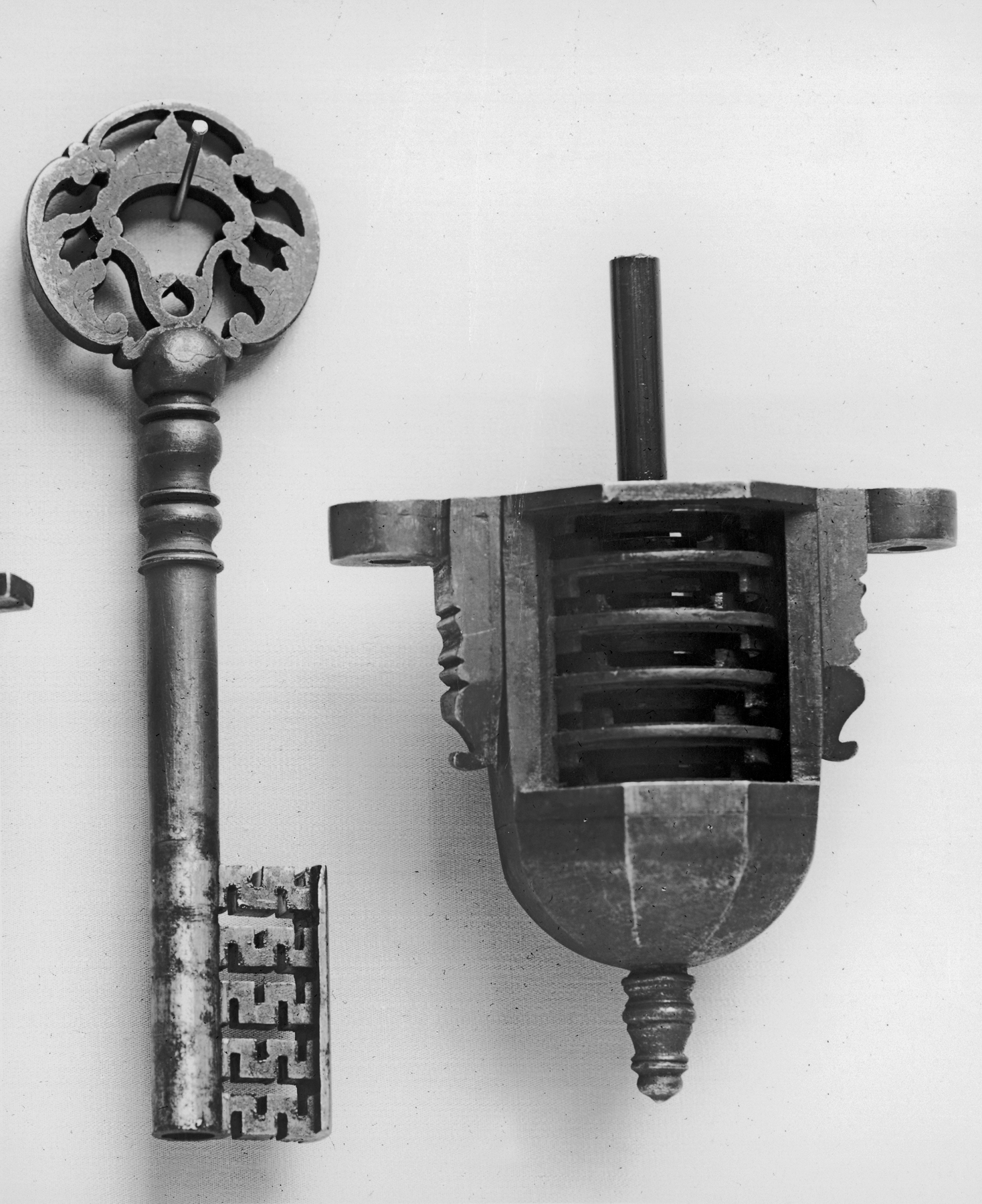Lock Nut with Key
(Baroque Europe )
The 'nut' is the lock mechanism, usually hidden within an exterior casing. Renaissance locks were 'warded' - that is, the lock mechanism was based on a series of metal barriers (wards) designed to frustrate the entry of all but the correct key. Keys for such locks have grooves to match the configuration of the metal barriers; after bypassing the wards, the key is free to turn and unlatch a horizontal bolt, unlocking the door or chest.
Provenance
Provenance (from the French provenir, 'to come from/forth') is the chronology of the ownership, custody, or location of a historical object. Learn more about provenance at the Walters.
Charles T. Yerkes (1837-1905) [date and mode of acquisition unknown]; Charles T. Yerkes Estate Sale, American Art Association, New York, 1910, no. 490 or 491 (?); Henry Walters, Baltimore, 1910, by purchase; Walters Art Museum, 1931, by bequest.
Exhibitions
| 1987 | Safe and Secure: Keys and Locks. Cooper-Hewitt National Design Museum, New York. |
Geographies
Germany
(Place of Origin)
Scandinavia (Place of Origin)
Measurements
lock: 6 1/2 x 4 3/4 in. (16.51 x 12.07 cm); key: 8 1/8 in. (20.64 cm)
Credit Line
Acquired by Henry Walters, 1910
Location in Museum
Not on view
Accession Number
In libraries, galleries, museums, and archives, an accession number is a unique identifier assigned to each object in the collection.
In libraries, galleries, museums, and archives, an accession number is a unique identifier assigned to each object in the collection.
52.137


